Solid timber recovery and economics of short-rotation small-diameter eucalypt forestry
This report was prepared for Future Forests Research Ltd (FFR) by Scion.
Authors:
Dean Satchell, Sustainable Forest Solutions, R.D. 1 Kerikeri, Northland 0294. +64 21 2357554
James Turner, Scion, Private Bag 3020 Rotorua 3010. +64 7 3435899
Date: June 2010
Appendix 1: Assumptions in Discounted Cash Flow Analysis
Appendix 2: Prices and values of timber in New Zealand used for estimating board prices
Appendix 3: Timber grading
Appendix 4: Sawmilling methodology
Appendix 5: Glossary of terms
Spreadsheet 1: Kaingaroa Compartment 1194 E. regnans economic value (Microsoft Excel macro-enabled workbook 3.6 MB)
Spreadsheet 2: Optimal rotation and stocking for E. regnans (Microsoft Excel macro-enabled workbook 864 KB)
Treegrower article »
Timber recovery and economics of short-rotation small-diameter eucalypt forestry
The high value and the diversity of end uses for eucalypt hardwood timber are increasingly being recognised. However, the downside is that eucalypts are considered problematic to mill. A new method for sawing young small diameter eucalypt logs has been developed. The initial results indicate that sawn product recovery has been greatly improved over conventional sawing techniques.
A recently completed project, supported by the Sustainable Farming Fund, quantified and documented the potential returns to the grower from using a new method to saw small diameter eucalypt logs. This project was a joint venture between the NZFFA and Future Forests Research, and the data gained from it will benefit farm foresters and other land managers interested in the potential returns from growing plantation eucalypts. The currently accepted regime for growing eucalypts requires large trees grown over a long rotation of 30 years or more. This is to make sure the diameters are sufficient size for sawn timber recovery. Sawn timber recovery from young small diameter eucalypt logs has traditionally been very low at around 25 to 30 per cent, which is considered to be uneconomic. However, the novel hybrid quarter-sawing and slabbing technique used in this study suggests that sawn timber recovery can be increased to greater than 50 per cent.
The potential to use this new method to increase timber recovery from small diameter logs offers growers alternative regimes based on shorter rotation crops and higher stocking rates. For the ash and stringybark eucalypts currently being grown for timber in New Zealand, the wood properties of small and young trees are very good. Provided that the wood is sawn economically, there are no other known impediments to increased use beyond sufficient resource scale. The development of short rotation sawlog forestry regimes has the potential to improve the economics of growing eucalypts and encourage people to grow more of these species.
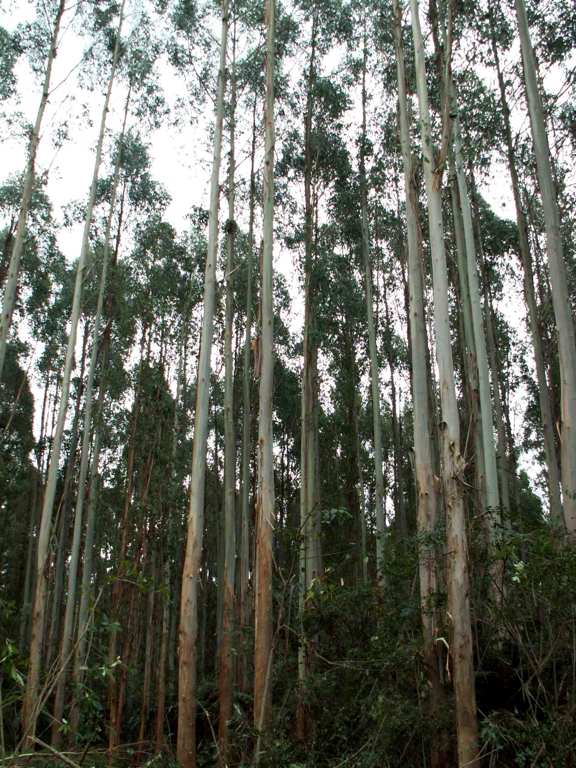
Sample harvesting
To meet the objectives of this project, 91 randomly selected logs of Eucalyptus regnans were harvested from an 18-year-old stand in Kaingaroa Forest. They had been planted at 1,100 stems per hectare, had no silvicultural management and at harvest had a stocking rate of 556 stems per hectare.
The logs ranged in diameter from 25 cm to 43 cm and were milled with a Woodmizer portable bandsaw into a range of board sizes, usually 100 mm by 25 mm suitable for flooring or furniture. Logs had an average small end diameter of 31.8 cm.
A total of 25 cubic metres of green logs were sawn and 14 cubic metres of boards were recovered, a conversion rate of 56 per cent. This sawn timber was seasoned, dressed and then graded using Australian standard AS 2796.2 – 2006. Graded product recovery was 43 per cent of the total log volume. The conversion returns − the value of sawn timber recovered from the log − were estimated based on product recovery and wholesale prices for air dried E. regnans timber, minus the harvesting, transport and processing costs.
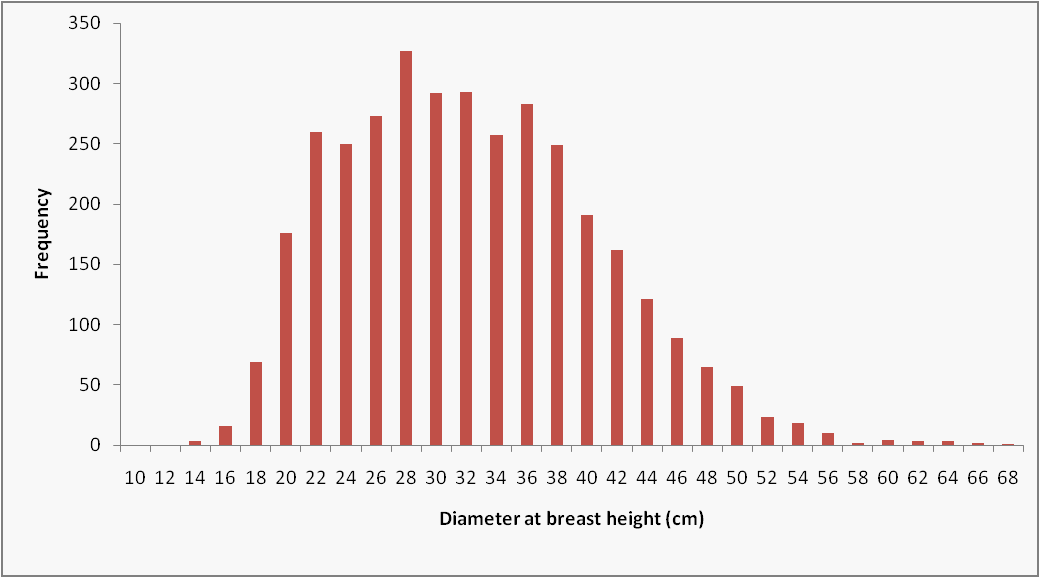
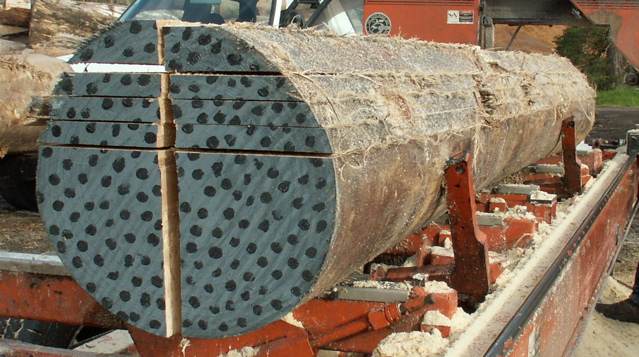
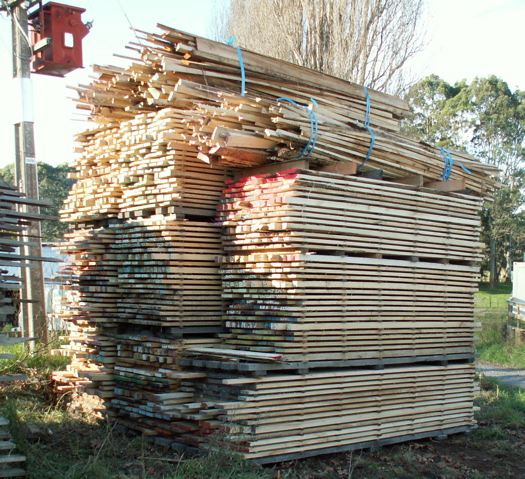
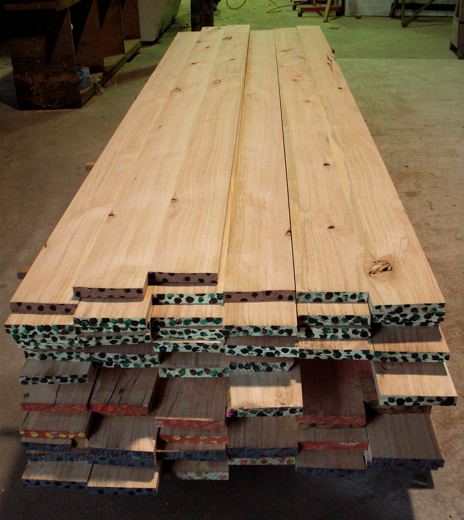
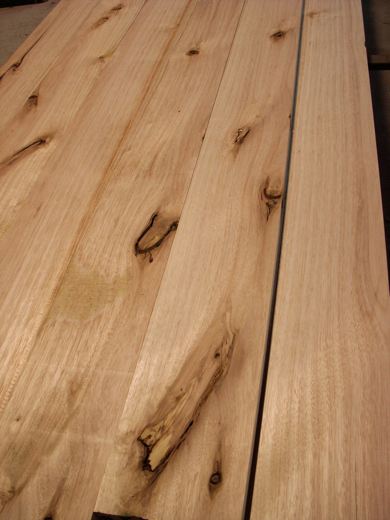
Value and volume
In analysing the data collected, the focus was on the relationship between both the value and volume of sawn timber recovered and log diameter. As log diameter increases, log value per cubic metre also increases. Log value increased with diameter due to −
- Increased sawn timber recovery as a percentage of log volume
- Decreased milling cost per cubic metre of sawn timber produced.
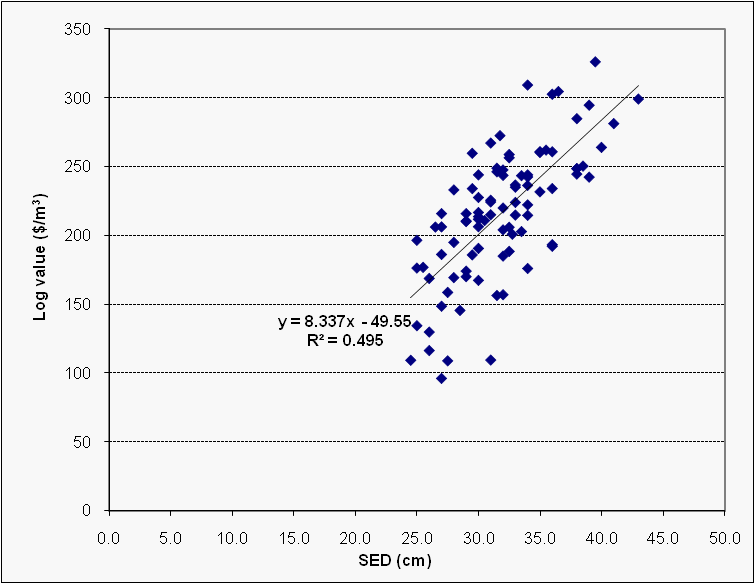
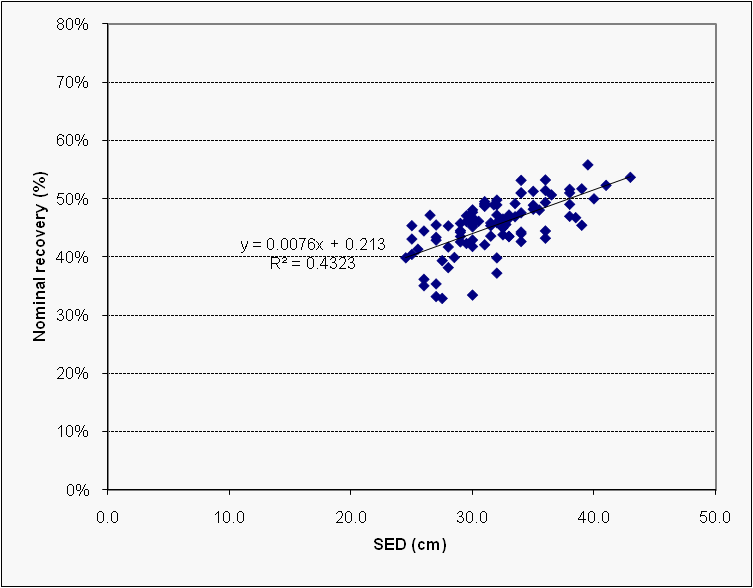
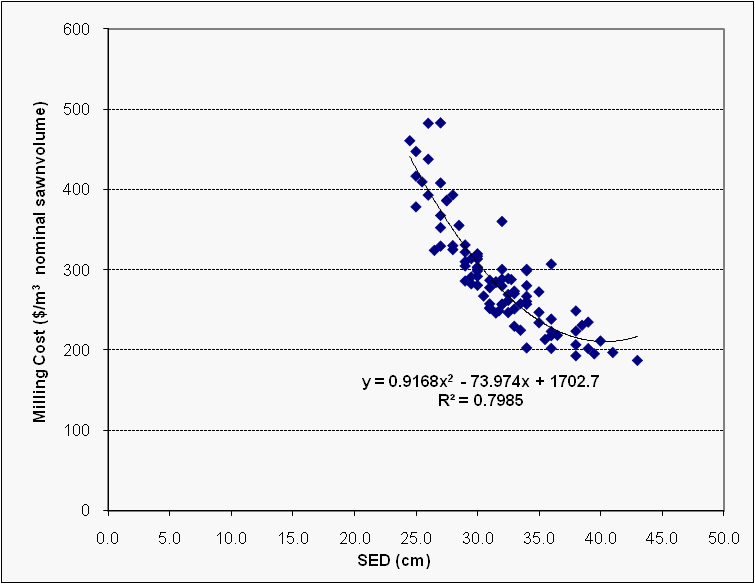
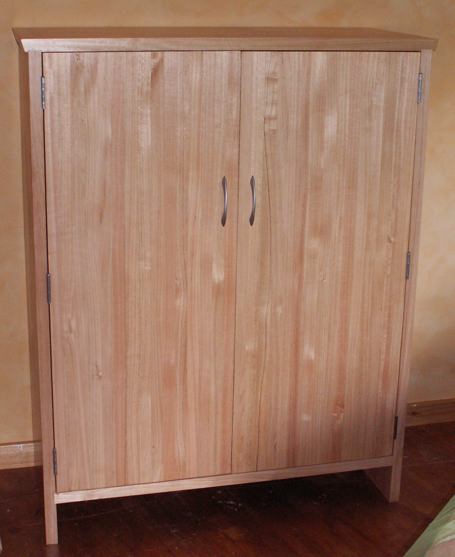
The net present value for the production of sawn timber and pulp from this stand was estimated at over $10,000 for each hectare at year 18, an internal rate of return of 16.8 per cent. Main contributors to this high value were −
- The large proportion of millable logs within the stand, 61 per cent by volume, a result of the ability to recover timber from small diameter logs, with sawlog value accounting for over 95 per cent of the stand value;
- A cost-efficient sawmilling strategy which produced a high sawn recovery;
- The high wholesale price allowed for E. regnans timber, in accordance with current prices for similar products in New Zealand.
These high returns provide a benchmark for potential returns from an emerging plantation industry. By diverting logs with a small end diameter of greater than 25 cm away from lower value pulpwood to higher value sawlogs, returns to the grower could be greatly improved. However, sufficiently mature hardwood timber markets and log supply would be required at the time of harvest for these returns to be realised.
Scope for the future
There appears to be considerable scope for product development and niche marketing for ash eucalypt in New Zealand. The challenge remains for growers to take the opportunity and collectively move eucalypt forestry forward to emerge as a viable industry.

A further analysis, available on the NZFFA website, uses the results of this study and the Future Forests Research eucalypt growth models. This analysis examines the influence of different silvicultural regimes and rotation lengths on short rotation sawlog profitability. The spreadsheet and economic analysis can be modified for different scenarios and prices.
The NZFFA Eucalyptus Action Group will continue to work on promoting eucalypts as plantation forestry species to farm foresters, forestry professionals and forest companies.
Disclaimer: This report has been prepared by New Zealand Forest Research Institute Limited (Scion) for Future Forests Research Limited (FFR) subject to the terms and conditions of a Services Agreement dated 1 October 2008.The opinions and information provided in this report have been provided in good faith and on the basis that every endeavor has been made to be accurate and not misleading and to exercise reasonable care, skill and judgement in providing such opinions and information. Under the terms of the Services Agreement, Scion's liability to FFR in relation to the services provided to produce this report is limited to the value of those services. Neither Scion nor any of its employees, contractors, agents or other persons acting on its behalf or under its control accept any responsibility to any person or organisation in respect of any information or opinion provided in this report in excess of that amount.

 Farm Forestry New Zealand
Farm Forestry New Zealand

